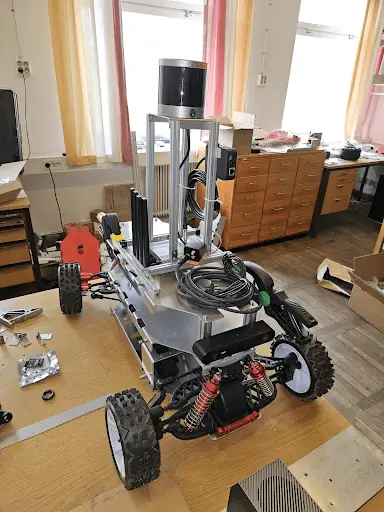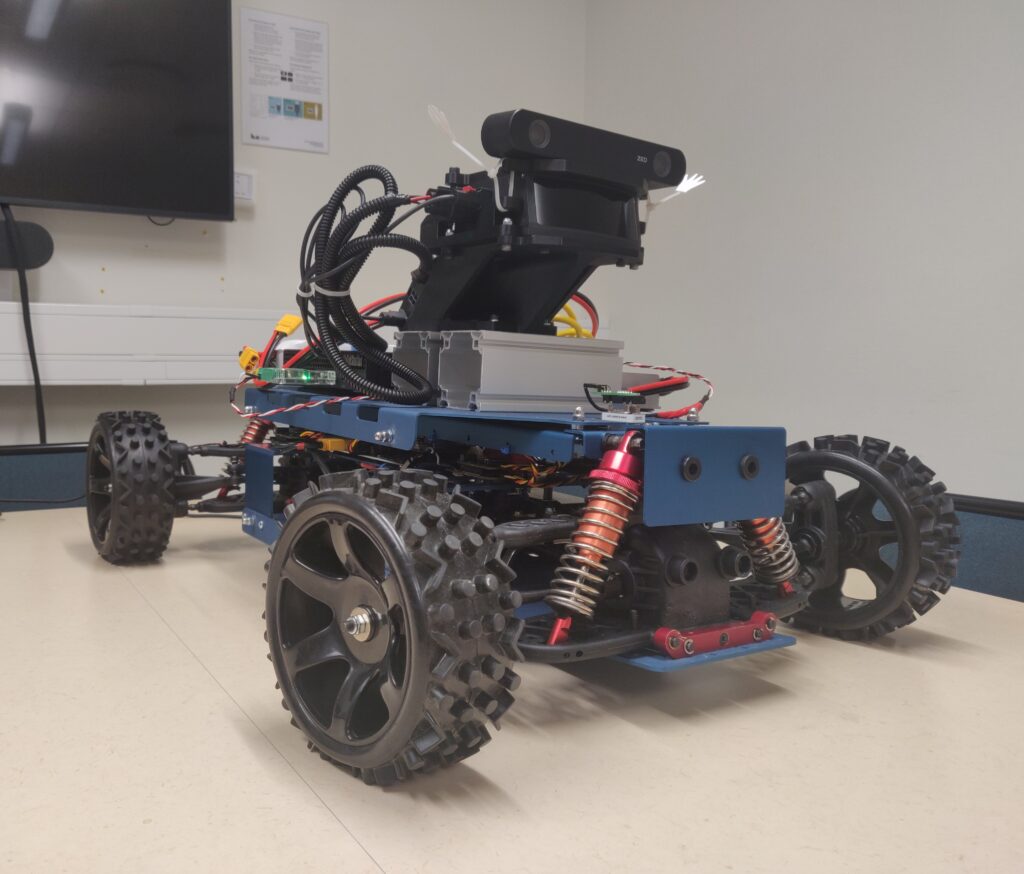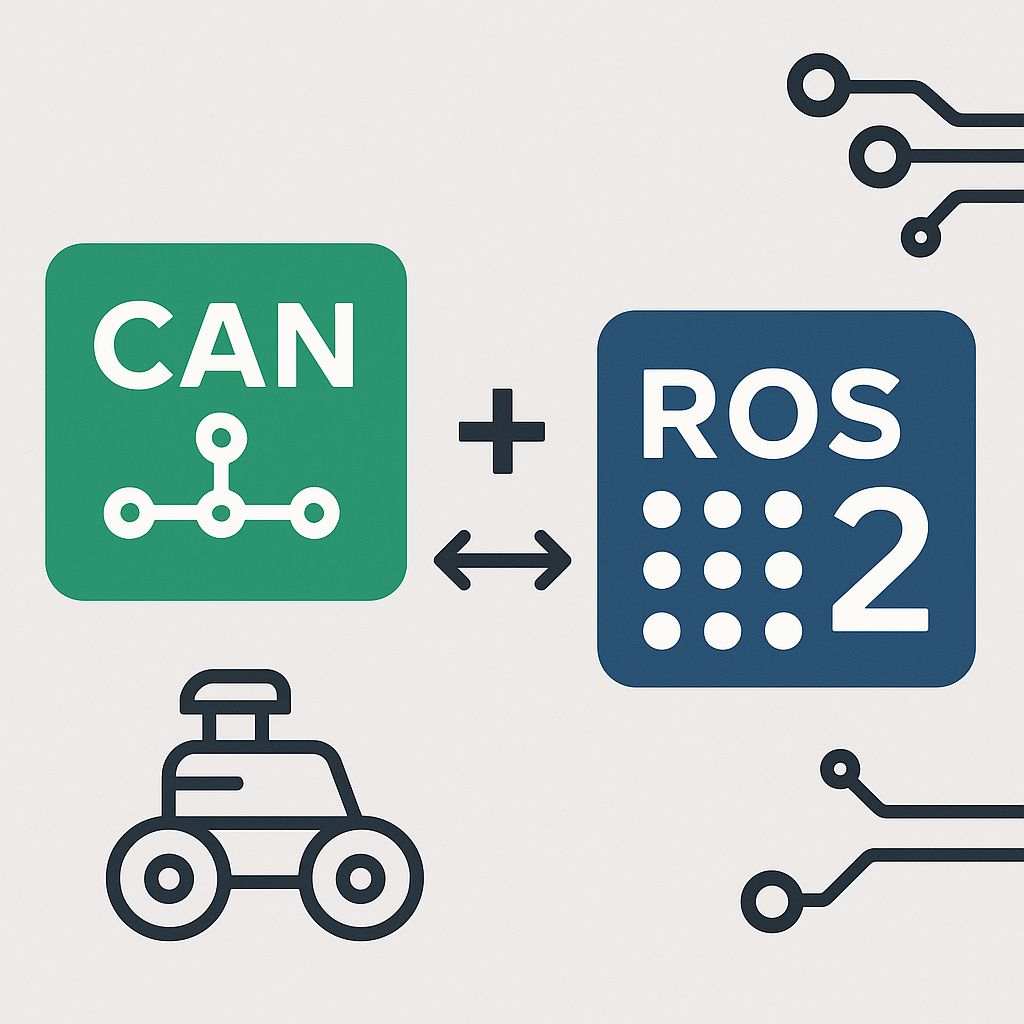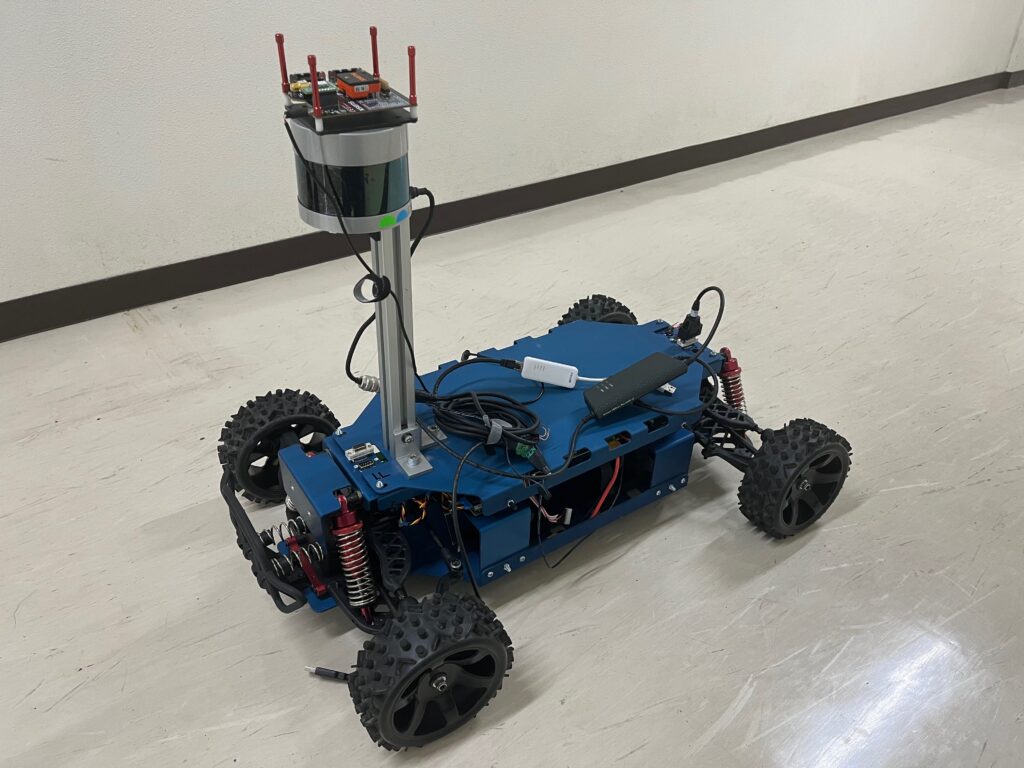CanEduDev Rover: Technical Progress Update on System Integration
We are excited to share a detailed update on the ongoing development of the CanEduDev Rover, a key project within our collaboration with Telenor, KTH, and the TECoSA project. The integration of essential components and the overall system architecture is nearing completion, bringing together advanced technologies aimed at real-world applications in autonomous systems research. This progress represents a significant step forward in our mission to create a flexible and scalable platform for autonomous driving research and development.
Core Components in Use
The CanEduDev Rover integrates several cutting-edge components designed to enhance safety, performance, and adaptability in autonomous systems:
- Ultrasonic Sensors: Integrated for short-range obstacle detection and emergency braking, these sensors provide an additional layer of safety by enabling the Rover to react swiftly to nearby objects and sudden obstacles in its path.
- Disc Brakes with Wheel Speed Sensors: These components enable precise speed estimation and braking control, contributing to the Rover’s stability and performance in dynamic environments. This braking system ensures smooth and safe operation, particularly in more complex terrains.
- Battery Monitoring System: Real-time monitoring of battery health and power distribution ensures optimal performance and prevents potential system failures due to battery issues. This system provides critical data on the Rover’s power consumption and supports efficient energy management.
System Architecture and Component Integration
The CanEduDev Rover is built on a Distributed Embedded Control System (DECS) architecture, which leverages a CAN bus network to facilitate reliable and robust communication between subsystems. This architecture provides flexibility in design, supporting the integration of additional sensors, compute units, and control modules as research requirements evolve.
Key Milestones Achieved
Several critical components have now been fully integrated into the Rover, each bringing us closer to a fully operational autonomous platform:
- Nvidia Orin Compute Platform Integration: The Nvidia Orin compute platform is now fully integrated, providing real-time processing power for AI-driven tasks such as sensor fusion, path planning, and machine learning. This platform is crucial for managing the large amounts of data generated by the Rover’s sensors, enabling quick and accurate decision-making in real-time scenarios.
- 3D LiDAR for High-Resolution Mapping: The Rover’s 3D LiDAR system is operational, providing high-resolution, 360-degree environmental mapping. With a wide vertical field of view, the LiDAR enables precise navigation and obstacle detection, making it particularly effective in complex environments where objects of varying sizes and heights need to be identified and tracked.
- GNSS and IMU Integration for Precision Navigation: The integration of GNSS (Global Navigation Satellite System) and IMU (Inertial Measurement Unit) ensures high-accuracy positioning and navigation capabilities. This combination is essential for autonomous operations, especially in outdoor environments where dynamic positioning and orientation tracking are critical for safe and efficient movement.
- Smart Cameras for Enhanced Situational Awareness: Smart cameras have been incorporated into the system to provide mid-range object recognition. These cameras work in tandem with the Nvidia Orin platform, using AI algorithms to recognize objects in the Rover’s environment, further enhancing situational awareness and decision-making capabilities.
- 5G Connectivity for Real-Time Communication: Thanks to our partnership with Telenor, the Rover is equipped with 5G connectivity, enabling real-time data transfer and remote control with ultra-low latency. This is a vital feature for distributed autonomous systems, allowing for remote operation and real-time collaboration between different systems and locations. The 5G integration also supports future research into remote control and edge computing applications.
Next Steps: Full Validation and Calibration
As the system integration nears completion, our immediate focus shifts to the full validation of all integrated components. This validation process is critical for ensuring that each subsystem, from sensors to computing platforms, operates according to expected performance standards. Rigorous testing will verify the stability, accuracy, and safety of the Rover’s components in both controlled and real-world environments.
Once the validation process is complete, we will proceed to the calibration phase, where each system will be fine-tuned for optimal performance. The calibration will focus on aligning the Rover’s sensors and control mechanisms, ensuring that it can perform accurately in a variety of real-world applications. This phase is essential for maximizing the Rover’s potential as a research platform for autonomous systems development.
Conclusion
The CanEduDev Rover is on track to become a highly adaptable and versatile platform for the development of next-generation autonomous systems. With its advanced system architecture, high-performance components, and scalable design, the Rover offers researchers a unique tool for exploring complex challenges in autonomous navigation, sensor fusion, and real-time decision-making.
As we finalize the validation and calibration phases, we look forward to the opportunities this platform will unlock for researchers and industry partners alike. Whether it’s used in autonomous driving research, distributed control systems, or AI development, the CanEduDev Rover is poised to make significant contributions to the future of autonomous technology.
For further technical details or collaboration inquiries, please contact us or visit our website.





